
|
Laser Technology - Defence and Security Applications |
|
| PRODUCTS | SERVICES | ABOUT US | EVENTS | CONTACT |
|
|
||
|
LAWAREC Seaborne Laser Warning Detector System is a real-time surveillance system for Naval Forces which offers rapid and precise threat reconnaissance and warning in case of an attack.
USE AND DESCRIPTION: LAWAREC Seaborne Laser Warning Detector System (SLWDS) is a real-time surveillance system for Naval Forces which offers rapid and precise threat reconnaissance and warning in case of an attack. The environment is monitored and the collected data are evaluated. In case of danger, a warning signal is emitted enabling immediate reaction to the threat. To meet the customers' requirements, SLWDS can be equipped with three various types of detection modules - Hexoculus, Octoculus and Quadroculus with different parameters of sensitivity, angular resolution and spectral range. Adequate number of sensor modules installed at various locations on a ship provide 360° surveillance in azimuth and 90° surveillance in elevation. Sensor configurations are determined by ship size and LASER “Hotspots”. High-speed processors continuously process the received laser signals in real time so that threats approaching the ship by air, land or sea are detected immediately and engaged effectively. This high coverage improves the situation awareness which is now even more crucial as the present-day battle scenarios are characterized by a wide use of laser devices. Many of them are implemented in extremely lethal weapon systems that can pose a serious threat. SLWDS is designed to enhance ship survivability by making the users to be able to identify threats before they approach and prevent them from attacking. SLWDS´ central unit consists of an appropriate number of active sections, usually AFT and FWD groups, plus two redundant sections, ready to take on the role for possibly damaged section. In each section, distributed detection modules are connected in daisy-chain loop. Number of detection modules per loop and number of sections per central unit can vary depending on the size of protected object. To achieve optimal signal transmission time, in each loop can be up to 10 detection modules and central unit can consists up to 10+2 sections. Operation of each section is internally autonomous or all sections can work in master/slave mode where each section is able to take the master function. This guarantees the system reliability even in the case of partial damage. Data from each incident are transfered to the central unit with an accurate time-stamp, that enables exclusion of the signal from being reflected by the surrounding environment. For this reason all the modules contain an autonomous, accurately synchronized time base. The central unit located inside the operator compartment, processes incoming information from individual modules, evaluates them, and then offers the operator a summary of enemy laser activities. Simultaneously, it suggests a solution to counter the threat (like firing smoke decoys) which in semi-automatic mode waits for the operator's confirmation and in automatic mode directly executes the countermeasures to defeat enemy activities. The central unit indicates the actual state in real time, and sends this information through the serial link to the superior Tactical System; it also produces an audio signal indicating a threat to the intercom. Simultaneously, it saves all incidents to the internal memory for later review and post-analysis. SLWDS is fully integrable and interoperable with any on-board Combat Management System. This provides the ability to operate in conjunction with almost all kind of Counter Measure Systems, such as jamming and dazzling laser or decoy launcher systems. The entire counter operation takes place within a very short time span and at a safe distance from the vessel to be protected. SLWDS allows simple and effective management of Threat Libraries. A full integration and modification of all existing Threat Libraries, and creation of new ones is quick, easy and accurate. The post-analysis of recorded mission data and the resultant updating of the emitter parameter database is obvious. User-friendly operation of the Seaborne Laser Warning Detector reduces the training costs and risks of training and also improves operator adoption of knowledge and skills. Provided effective training will give you well trained operators able to take advantage of the full capabilities that our system has to offer.
TECHNICAL DATA: |
|
Detection module Sensitivity: Angular Resolution - in azimuth: - in elevation: Full Angle of View - in azimuth: - in elevation: Pulse Frequency Range: Probability of Interception: Operating Temperature: Pulse width: Number of detectors: Spectral range: |
Hexoculus 10 W/m² 15° 90° 180° (±90° from central vertical line) 90° (-20°, +70° from horizontal line) 40 KHz max 99% for single pulse >99% for multi pulse -30 to +70°C 5 ÷ 500 ns 6 700 ÷ 1700 nm (400 ÷ 2200 nm option) |
Octoculus 1 W/m² 3° 13° 180° (±90° from central vertical line) 80° (-10°, +70° from horizontal line) 40 KHz max 99% for single pulse >99% for multi pulse -30 to +70°C 5 ÷ 500 ns 10 multistrip 700 ÷ 1700 nm (Split in 3 bands) |
Quadroculus 10 W/m² 1° 1° 180° (±90° from central vertical line) 90° (-10°, +80° from horizontal line) 40 KHz max 99% for single pulse >99% for multi pulse -30 to +70°C 5 ÷ 500 ns 4 coded multistrip 500 ÷ 1650 nm (Split in 3 bands) |
|
|
||
|
EXAMPLE OF SLWDS INSTALLATION
|
|
|
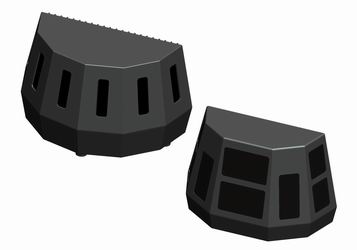
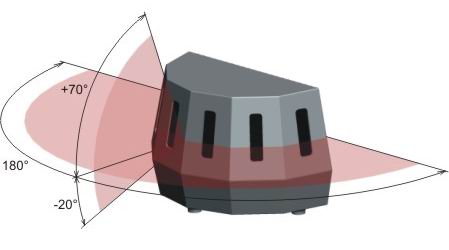
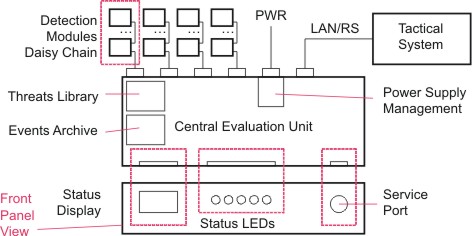
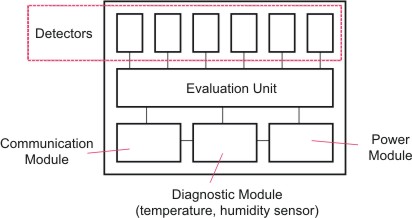
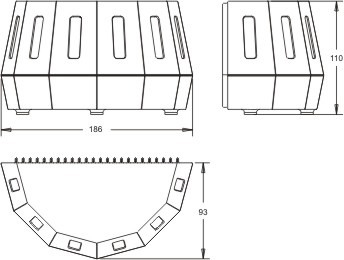
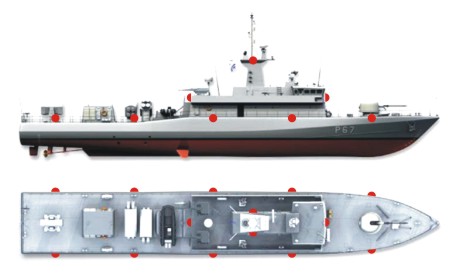
 download pdf
download pdf